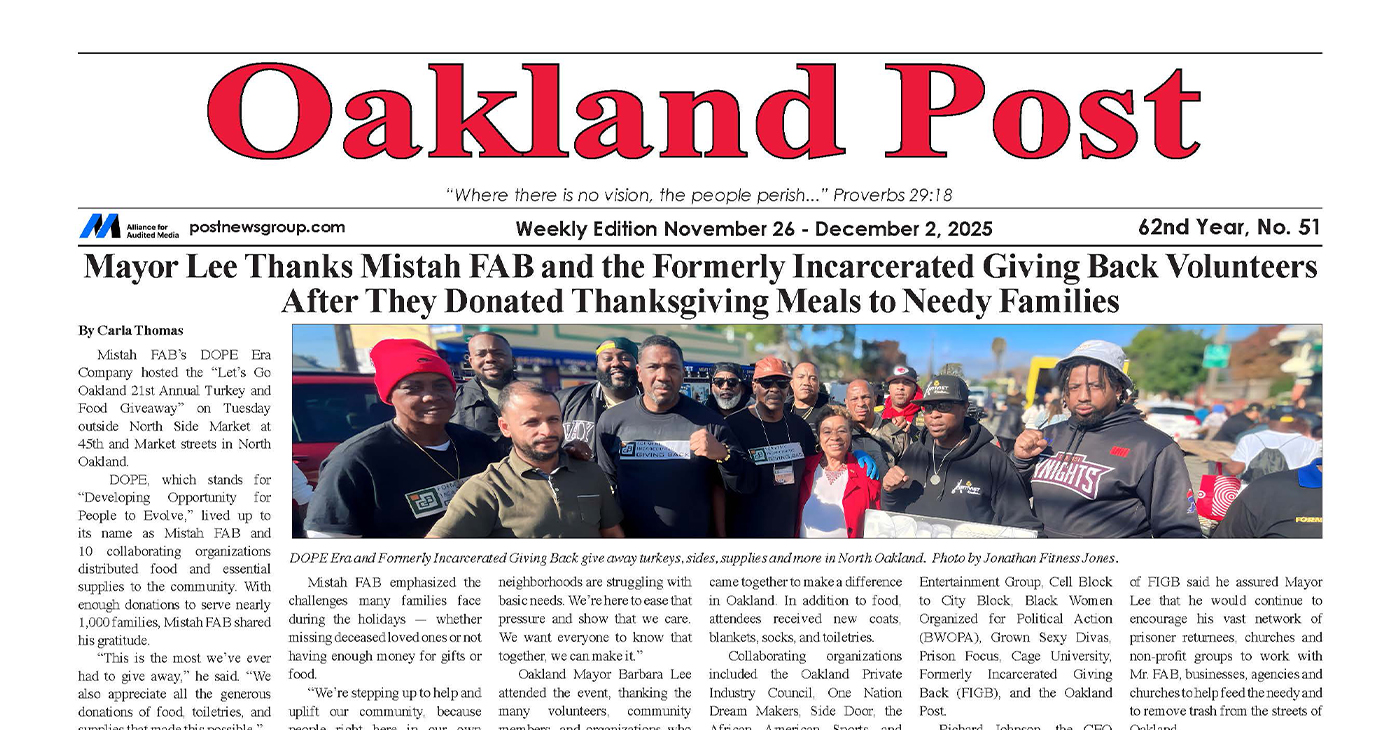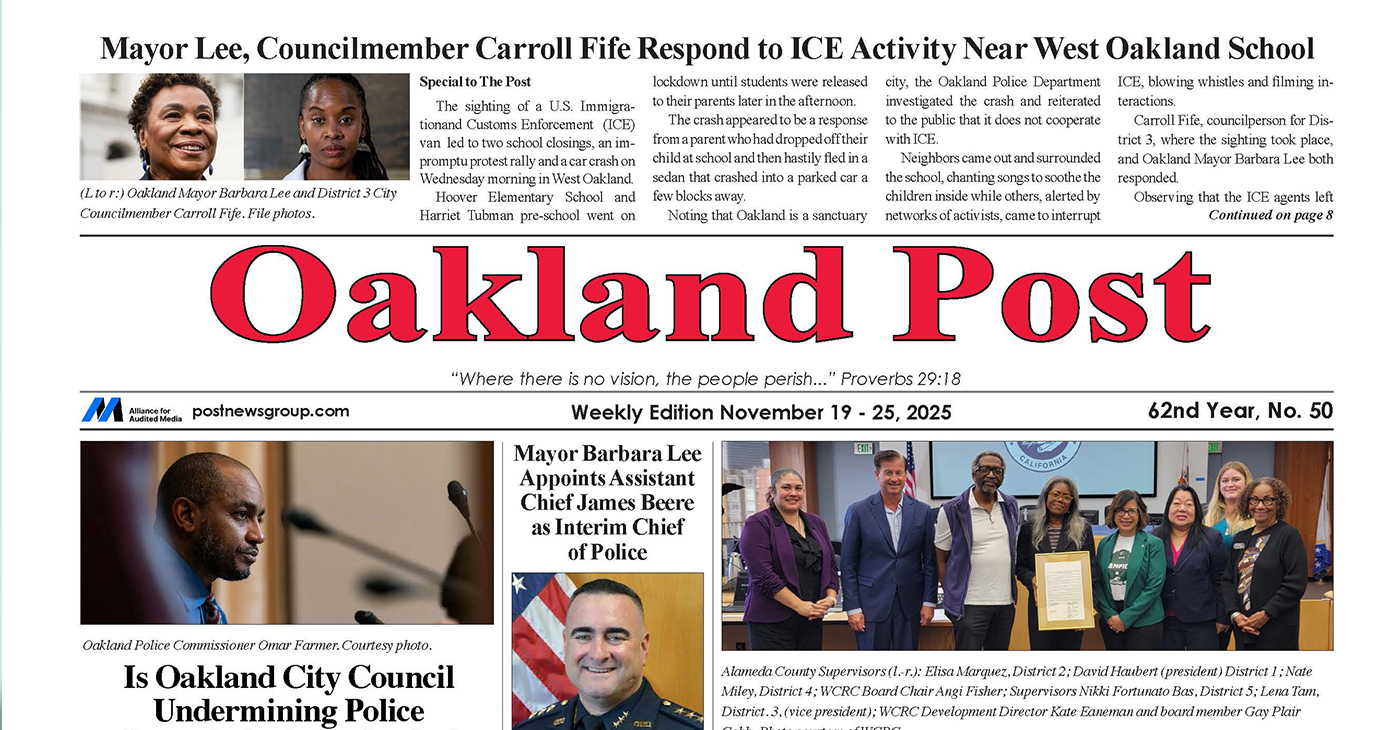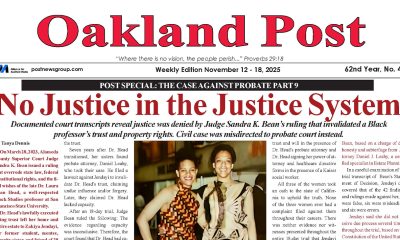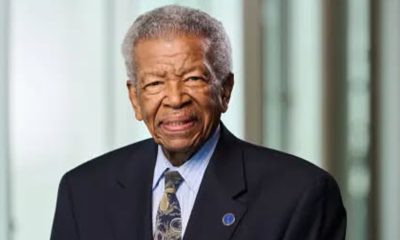Entertainment
Media Turns Detective with ‘The Jinx,’ Other Murder Cases

In this Aug. 15, 2014 file photo, New York City real estate heir Robert Durst leaves a Houston courtroom. Durst was arrested in New Orleans on an extradition warrant to Los Angeles on Saturday, March 14, 2015. (AP Photo/Pat Sullivan)
LYNN ELBER, AP Television Writer
LOS ANGELES (AP) — Robert Durst was a rich man living free despite police efforts to link him to murder. Adnan Syed was a young man imprisoned for life for killing an ex-girlfriend.
Media scrutiny changed their fortunes, pushing both back into the courts: Durst is facing trial on a murder charge, and Syed awaits an appeal of his conviction.
Observers say it’s what journalists, or others taking on the role of investigative reporters, can and should do — but not simply, or heedlessly, to play faux detective.
“We are holding law enforcement accountable,” said Kelly McBride, an expert on ethics for the Poynter Institute journalism think tank. “Our job is not to prove people innocent or guilty. But we very much are part of the checks and balances that ensure that democracy is working.”
Durst, heard dramatically muttering “killed them all” to himself in the Sunday finale of HBO’s six-part docuseries “The Jinx: The Life and Deaths of Robert Durst,” was charged Monday with first-degree murder in the 2000 shooting of his confidante, Susan Berman.
Police had planned to question Berman as part of their renewed probe into the 1982 disappearance of Durst’s wife. In 2003, the multimillionaire real estate heir was acquitted of murder in the death of a Texas neighbor.
Syed, who has maintained his innocence in the strangulation of Hae Min Lee in 1999, when both were teenagers, was granted a request for review by Maryland’s Court of Special Appeals after the popular National Public Radio podcast “Serial” dissected the evidence against him last year.
News and entertainment programs spotlighting criminal cases aren’t new: “America’s Most Wanted” began hunting fugitives in 1988. But the HBO and radio projects, along with a number of TV series, are full-blown investigations.
CBS’ long-running crime-focused newsmagazine “48 Hours” has had an impact on a number of cases. The family of Ryan Ferguson, a Missouri man imprisoned in the killing of a newspaper sports editor, credited the attention of “48 Hours” for drawing attention to his case. He was released after a court determined police fabricated evidence against him.
“Sometimes people feel that nothing will happen to them if they talk to us,” said Susan Zirinsky, senior executive producer. “Obviously that can be incorrect if it goes public. Any exposure can end up coming back to haunt them. We’ve had killers who think they can outsmart us and talk to us, and then the authorities get them.”
Criminals can be braggarts, said Rebecca Lonergan, a University of Southern California Gould School of Law professor and a former federal prosecutor.
“There’s a certain thrill in talking to media,” she said.
But the suggestion that media’s recent record puts law enforcement’s competence in doubt deserves scrutiny, she and others said.
Filmmakers worked on “The Jinx” for seven years, according to HBO. The Orange County Cold Case Task Force, formed last year with 12 investigators, was handed some 800 unsolved murder cases dating back to 1961, said task force member Santa Ana police Sgt. Richard Gatto.
There are other notable differences.
“We have access to certain databases that (journalists) might not have access to,” Gatto said. “But as far as the law is concerned, there are certain things that reporters can do that we can’t do as agents of the government.”
Police must heed constitutional safeguards including the Sixth Amendment, which protects the right to counsel. If a suspect gives any indication that he may have killed someone, all law enforcement interviews must stop, Lonergan said.
Not so with news reporting, which sets its own ethical standards.
“As journalists, we don’t have legal restrictions on how we gather information. We have civil penalties when we do a bad job, but we can pretty much do whatever we want,” Poynter’s McBride said, adding “most of us believe we have an obligation to be transparent and honest.”
With “The Jinx,” she said, Durst’s vague and rambling utterances — captured on a body microphone he kept on during a restroom visit — required further scrutiny.
“Your obligation is to find out what the context is and not assume you know what the context is,” McBride said, suggesting Durst should have been given the chance to address what he meant.
Filmmaker Andrew Jarecki has said Durst knew he was being recorded and signed a contract giving the project free rein in using the material it gathered. Any evidence was shared with police well before the series aired, he said.
Durst’s longtime Houston lawyer, Chip Lewis, called Jarecki “duplicitous” for not making it clear to Durst that he would be giving footage to police.
Bob Steele, a Poynter fellow and recently retired DePauw University professor, said he was unfamiliar with details of the Durst case or “The Jinx” but had a strong caution for reporters in general.
“We cannot just go after these stories at full blast without paying attention to professionalism” and an individual’s constitutional rights, Steele said.
___
AP Television Writer David Bauder in New York contributed to this report.
Copyright 2015 The Associated Press. All rights reserved. This material may not be published, broadcast, rewritten or redistributed.
Alameda County
Seth Curry Makes Impressive Debut with the Golden State Warriors
Seth looked comfortable in his new uniform, seamlessly fitting into the Warriors’ offensive and defensive system. He finished the night with an impressive 14 points, becoming one of the team’s top scorers for the game. Seth’s points came in a variety of ways – floaters, spot-up three-pointers, mid-range jumpers, and a handful of aggressive drives that kept the Oklahoma City Thunder defense on its heels.

By Y’Anad Burrell
Tuesday night was anything but ordinary for fans in San Francisco as Seth Curry made his highly anticipated debut as a new member of the Golden State Warriors. Seth didn’t disappoint, delivering a performance that not only showcased his scoring ability but also demonstrated his added value to the team.
At 35, the 12-year NBA veteran on Monday signed a contract to play with the Warriors for the rest of the season.
Seth looked comfortable in his new uniform, seamlessly fitting into the Warriors’ offensive and defensive system. He finished the night with an impressive 14 points, becoming one of the team’s top scorers for the game. Seth’s points came in a variety of ways – floaters, spot-up three-pointers, mid-range jumpers, and a handful of aggressive drives that kept the Oklahoma City Thunder defense on its heels.
One of the most memorable moments of the evening came before Seth even scored his first points. As he checked into the game, the Chase Center erupted into applause, with fans rising to their feet to give the newest Warrior a standing ovation.
The crowd’s reaction was a testament not only to Seth’s reputation as a sharpshooter but also to the excitement he brings to the Warriors. It was clear that fans quickly embraced Seth as one of their own, eager to see what he could bring to the team’s championship aspirations.
Warriors’ superstar Steph Curry – Seth’s brother – did not play due to an injury. One could only imagine what it would be like if the Curry brothers were on the court together. Magic in the making.
Seth’s debut proved to be a turning point for the Warriors. Not only did he contribute on the scoreboard, but he also brought a sense of confidence and composure to the floor.
While their loss last night, OKC 124 – GSW 112, Seth’s impact was a game-changer and there’s more yet to come. Beyond statistics, it was clear that Seth’s presence elevated the team’s performance, giving the Warriors a new force as they look to make a deep playoff run.
Activism
Oakland Post: Week of November 26 – December 2, 2025
The printed Weekly Edition of the Oakland Post: Week of November 26 – December 2, 2025

To enlarge your view of this issue, use the slider, magnifying glass icon or full page icon in the lower right corner of the browser window.
Activism
Oakland Post: Week of November 19 – 25, 2025
The printed Weekly Edition of the Oakland Post: Week of November 19 – 25, 2025

To enlarge your view of this issue, use the slider, magnifying glass icon or full page icon in the lower right corner of the browser window.
-

 Activism3 weeks ago
Activism3 weeks agoOakland Post: Week of November 12 – 18, 2025
-

 Activism3 weeks ago
Activism3 weeks agoIN MEMORIAM: William ‘Bill’ Patterson, 94
-

 Activism3 weeks ago
Activism3 weeks agoHow Charles R. Drew University Navigated More Than $20 Million in Fed Cuts – Still Prioritizing Students and Community Health
-

 Bay Area3 weeks ago
Bay Area3 weeks agoNo Justice in the Justice System
-

 #NNPA BlackPress2 weeks ago
#NNPA BlackPress2 weeks agoLewis Hamilton set to start LAST in Saturday Night’s Las Vegas Grand Prix
-

 #NNPA BlackPress3 weeks ago
#NNPA BlackPress3 weeks agoThe Perfumed Hand of Hypocrisy: Trump Hosted Former Terror Suspect While America Condemns a Muslim Mayor
-

 #NNPA BlackPress3 weeks ago
#NNPA BlackPress3 weeks agoTrump’s Death Threat Rhetoric Sends Nation into Crisis
-

 #NNPA BlackPress2 weeks ago
#NNPA BlackPress2 weeks agoBeyoncé and Jay-Z make rare public appearance with Lewis Hamilton at Las Vegas Grand Prix
Entertainment
Media Turns Detective with ‘The Jinx,’ Other Murder Cases

In this Aug. 15, 2014 file photo, New York City real estate heir Robert Durst leaves a Houston courtroom. Durst was arrested in New Orleans on an extradition warrant to Los Angeles on Saturday, March 14, 2015. (AP Photo/Pat Sullivan)
LYNN ELBER, AP Television Writer
LOS ANGELES (AP) — Robert Durst was a rich man living free despite police efforts to link him to murder. Adnan Syed was a young man imprisoned for life for killing an ex-girlfriend.
Media scrutiny changed their fortunes, pushing both back into the courts: Durst is facing trial on a murder charge, and Syed awaits an appeal of his conviction.
Observers say it’s what journalists, or others taking on the role of investigative reporters, can and should do — but not simply, or heedlessly, to play faux detective.
“We are holding law enforcement accountable,” said Kelly McBride, an expert on ethics for the Poynter Institute journalism think tank. “Our job is not to prove people innocent or guilty. But we very much are part of the checks and balances that ensure that democracy is working.”
Durst, heard dramatically muttering “killed them all” to himself in the Sunday finale of HBO’s six-part docuseries “The Jinx: The Life and Deaths of Robert Durst,” was charged Monday with first-degree murder in the 2000 shooting of his confidante, Susan Berman.
Police had planned to question Berman as part of their renewed probe into the 1982 disappearance of Durst’s wife. In 2003, the multimillionaire real estate heir was acquitted of murder in the death of a Texas neighbor.
Syed, who has maintained his innocence in the strangulation of Hae Min Lee in 1999, when both were teenagers, was granted a request for review by Maryland’s Court of Special Appeals after the popular National Public Radio podcast “Serial” dissected the evidence against him last year.
News and entertainment programs spotlighting criminal cases aren’t new: “America’s Most Wanted” began hunting fugitives in 1988. But the HBO and radio projects, along with a number of TV series, are full-blown investigations.
CBS’ long-running crime-focused newsmagazine “48 Hours” has had an impact on a number of cases. The family of Ryan Ferguson, a Missouri man imprisoned in the killing of a newspaper sports editor, credited the attention of “48 Hours” for drawing attention to his case. He was released after a court determined police fabricated evidence against him.
“Sometimes people feel that nothing will happen to them if they talk to us,” said Susan Zirinsky, senior executive producer. “Obviously that can be incorrect if it goes public. Any exposure can end up coming back to haunt them. We’ve had killers who think they can outsmart us and talk to us, and then the authorities get them.”
Criminals can be braggarts, said Rebecca Lonergan, a University of Southern California Gould School of Law professor and a former federal prosecutor.
“There’s a certain thrill in talking to media,” she said.
But the suggestion that media’s recent record puts law enforcement’s competence in doubt deserves scrutiny, she and others said.
Filmmakers worked on “The Jinx” for seven years, according to HBO. The Orange County Cold Case Task Force, formed last year with 12 investigators, was handed some 800 unsolved murder cases dating back to 1961, said task force member Santa Ana police Sgt. Richard Gatto.
There are other notable differences.
“We have access to certain databases that (journalists) might not have access to,” Gatto said. “But as far as the law is concerned, there are certain things that reporters can do that we can’t do as agents of the government.”
Police must heed constitutional safeguards including the Sixth Amendment, which protects the right to counsel. If a suspect gives any indication that he may have killed someone, all law enforcement interviews must stop, Lonergan said.
Not so with news reporting, which sets its own ethical standards.
“As journalists, we don’t have legal restrictions on how we gather information. We have civil penalties when we do a bad job, but we can pretty much do whatever we want,” Poynter’s McBride said, adding “most of us believe we have an obligation to be transparent and honest.”
With “The Jinx,” she said, Durst’s vague and rambling utterances — captured on a body microphone he kept on during a restroom visit — required further scrutiny.
“Your obligation is to find out what the context is and not assume you know what the context is,” McBride said, suggesting Durst should have been given the chance to address what he meant.
Filmmaker Andrew Jarecki has said Durst knew he was being recorded and signed a contract giving the project free rein in using the material it gathered. Any evidence was shared with police well before the series aired, he said.
Durst’s longtime Houston lawyer, Chip Lewis, called Jarecki “duplicitous” for not making it clear to Durst that he would be giving footage to police.
Bob Steele, a Poynter fellow and recently retired DePauw University professor, said he was unfamiliar with details of the Durst case or “The Jinx” but had a strong caution for reporters in general.
“We cannot just go after these stories at full blast without paying attention to professionalism” and an individual’s constitutional rights, Steele said.
___
AP Television Writer David Bauder in New York contributed to this report.
Copyright 2015 The Associated Press. All rights reserved. This material may not be published, broadcast, rewritten or redistributed.
Alameda County
Seth Curry Makes Impressive Debut with the Golden State Warriors
Seth looked comfortable in his new uniform, seamlessly fitting into the Warriors’ offensive and defensive system. He finished the night with an impressive 14 points, becoming one of the team’s top scorers for the game. Seth’s points came in a variety of ways – floaters, spot-up three-pointers, mid-range jumpers, and a handful of aggressive drives that kept the Oklahoma City Thunder defense on its heels.

By Y’Anad Burrell
Tuesday night was anything but ordinary for fans in San Francisco as Seth Curry made his highly anticipated debut as a new member of the Golden State Warriors. Seth didn’t disappoint, delivering a performance that not only showcased his scoring ability but also demonstrated his added value to the team.
At 35, the 12-year NBA veteran on Monday signed a contract to play with the Warriors for the rest of the season.
Seth looked comfortable in his new uniform, seamlessly fitting into the Warriors’ offensive and defensive system. He finished the night with an impressive 14 points, becoming one of the team’s top scorers for the game. Seth’s points came in a variety of ways – floaters, spot-up three-pointers, mid-range jumpers, and a handful of aggressive drives that kept the Oklahoma City Thunder defense on its heels.
One of the most memorable moments of the evening came before Seth even scored his first points. As he checked into the game, the Chase Center erupted into applause, with fans rising to their feet to give the newest Warrior a standing ovation.
The crowd’s reaction was a testament not only to Seth’s reputation as a sharpshooter but also to the excitement he brings to the Warriors. It was clear that fans quickly embraced Seth as one of their own, eager to see what he could bring to the team’s championship aspirations.
Warriors’ superstar Steph Curry – Seth’s brother – did not play due to an injury. One could only imagine what it would be like if the Curry brothers were on the court together. Magic in the making.
Seth’s debut proved to be a turning point for the Warriors. Not only did he contribute on the scoreboard, but he also brought a sense of confidence and composure to the floor.
While their loss last night, OKC 124 – GSW 112, Seth’s impact was a game-changer and there’s more yet to come. Beyond statistics, it was clear that Seth’s presence elevated the team’s performance, giving the Warriors a new force as they look to make a deep playoff run.
Activism
Oakland Post: Week of November 26 – December 2, 2025
The printed Weekly Edition of the Oakland Post: Week of November 26 – December 2, 2025

To enlarge your view of this issue, use the slider, magnifying glass icon or full page icon in the lower right corner of the browser window.
Activism
Oakland Post: Week of November 19 – 25, 2025
The printed Weekly Edition of the Oakland Post: Week of November 19 – 25, 2025

To enlarge your view of this issue, use the slider, magnifying glass icon or full page icon in the lower right corner of the browser window.
-

 Activism3 weeks ago
Activism3 weeks agoOakland Post: Week of November 12 – 18, 2025
-

 Activism3 weeks ago
Activism3 weeks agoIN MEMORIAM: William ‘Bill’ Patterson, 94
-

 Activism3 weeks ago
Activism3 weeks agoHow Charles R. Drew University Navigated More Than $20 Million in Fed Cuts – Still Prioritizing Students and Community Health
-

 Bay Area3 weeks ago
Bay Area3 weeks agoNo Justice in the Justice System
-

 #NNPA BlackPress2 weeks ago
#NNPA BlackPress2 weeks agoLewis Hamilton set to start LAST in Saturday Night’s Las Vegas Grand Prix
-

 #NNPA BlackPress3 weeks ago
#NNPA BlackPress3 weeks agoThe Perfumed Hand of Hypocrisy: Trump Hosted Former Terror Suspect While America Condemns a Muslim Mayor
-

 #NNPA BlackPress3 weeks ago
#NNPA BlackPress3 weeks agoTrump’s Death Threat Rhetoric Sends Nation into Crisis
-

 #NNPA BlackPress2 weeks ago
#NNPA BlackPress2 weeks agoBeyoncé and Jay-Z make rare public appearance with Lewis Hamilton at Las Vegas Grand Prix

















































Leave a Reply